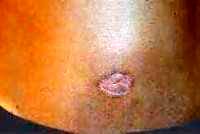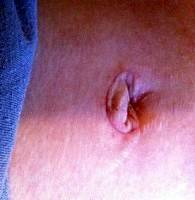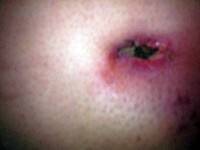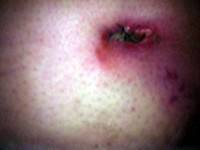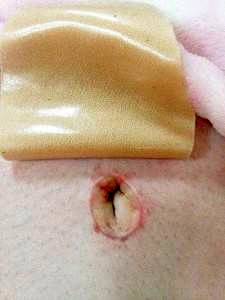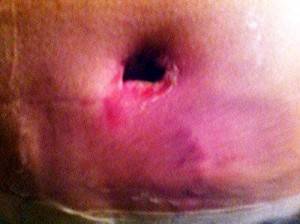Belly buttons after tummy tuck
Crusting around the umbilical region after a tummy tuck is very normal. As long as there is no significant drainage or smell then it is probably normal.
The crusting may last 2-3 weeks sometimes longer. I usually recommend showers and leave it open.
If there is some drainage then I recommend a gauze pad over the area to avoid staining clothes.
I don’t usually recommend antibiotic creams or peroxide. (Steven Wallach, MD, Manhattan Plastic Surgeon)
This should improve on its own with time. Clean it as you would the rest of your skin, and avoid the sun – remember, there is an incision there, and sunlight directly on a scar while it is maturing can cause some discoloration. (Shahram Salemy, MD, FACS, )
These forums can provide great information, but should not be used as a substitute for seeing and talking with your own physician. That being said, a small amount of crusting can be normal. Other signs to watch out for are odor (as you’ve noted), increased pain, and erythema or redness spreading from the belly button to the surrounding skin. These are all signs of a possible infection.
About antibiotic ointments and fungal infections, antibiotic ointments don’t necessarily promote fungal infections. Certain ointments such as neosporin (ingredient is neomycin) can cause an allergic reaction that may look like an infection.
So avoid neosporin and use something like bacitracin instead. The ointments keep the skin moist which can promote healing. If the area is too moist, that can promote a fungal infection. Regular cleaning and use of an antibiotic ointment, though, should not lead to a fungal infection. (Edward S. Lee, MD, Englewood Plastic Surgeon)
It’s normal to have some crusting around the belly buttons after a tummy tuck. Like you said, it’s basically a scab. It will come off on it’s own in time. Just keep the area clean and dry and it will continue to heal. (James Knoetgen, III, MD, Omaha Plastic Surgeon)
It’s not unusual to see crusting around the belly button following tummy tuck surgery. When this situation arises its appropriate to cleanse the area with soapy water or peroxide on a daily basis.
This is usually followed by dry dressings, but in some cases topical antibiotics may be necessary as well. In the majority of cases wound healing is uneventful when this approach is utilized. Occasionally crusting may indicate a more serious problem and for this reason it’s important to consult your surgeon. (Richard J. Bruneteau, MD, Minneapolis Plastic Surgeon)
During tummy tuck operation, especially during a transpositional one, belly button is separated from the abdominal skin and also blood supply of the abdominal flap is reduced especially in the midline. Therefore healing around belly buttons is slowed down and somehow compromised.
It is not uncommon to see crusting around belly button for an extended time. One need to be patient and as long as there is no foul smelling discharge or inflammation, there is no reason to worry too much. (Fereydoon S. Mahjouri, MD, Houston Plastic Surgeon)
Crusting around the belly button is normal after an abdominoplasty. Unless there is a foul smelling discharge it will probably heal without any problems. (Paul Vitenas, Jr., MD, San Diego Plastic Surgeon)
Healing of belly button after tummy tuck
Based on the picture you provided, your belly button looks normal for this point in recovery. Be patient with the healing process. Crusting is expected, due to some seepage from the incision. Allow the incision to heal and dry. Use of opintments and topical creams may irritate and cause complications.
- The belly buttons after tummy tuck
- Photos of belly buttons after tummy tuck
The best thing would be to leave it alone and allow it to heal before putting anything on it. Consult with your plastic surgeon if anything changes which could imply infection. (Tom J. Pousti, MD, FACS, Orange Plastic Surgeon)
Just make sure your surgeon sees this area and is aware of what is happening. Some degree of change with healing around the belly button is common and your surgeon should be aware in case he or she wants to change your dressing care. Best Regards, John Di Saia MD (John P. Di Saia, MD)
